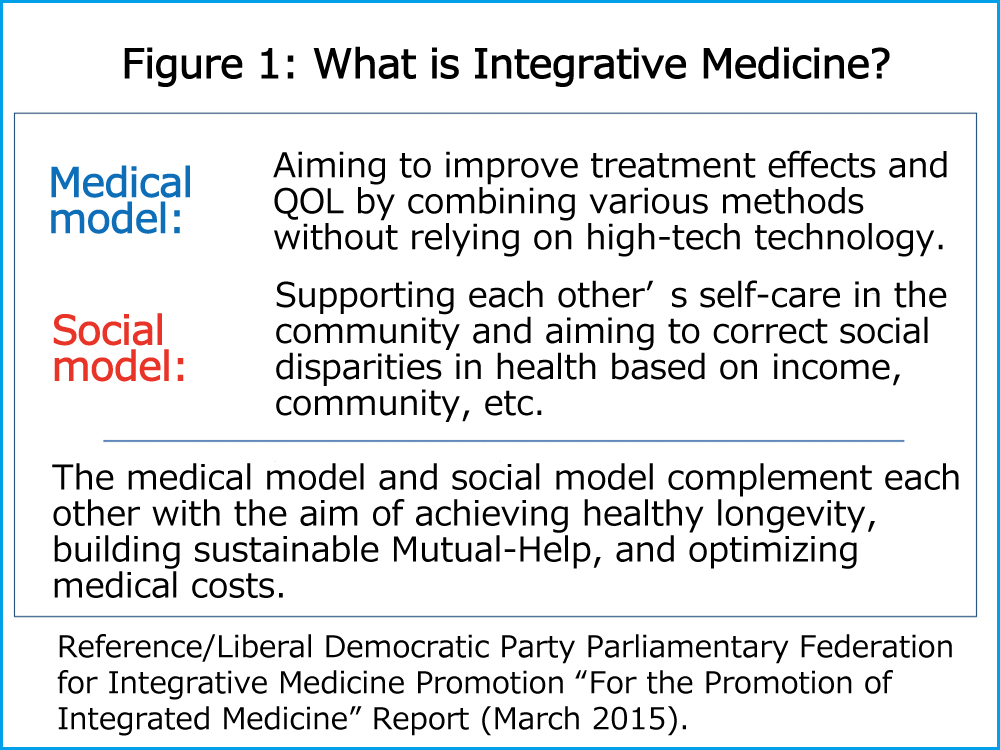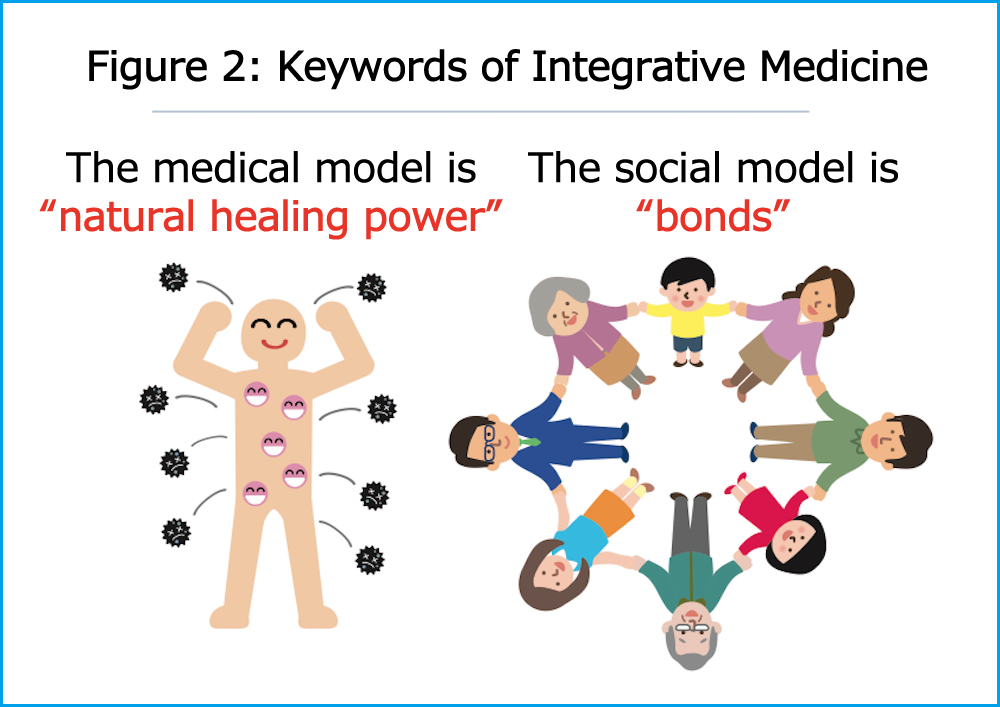Kiyoshi Suzuki, MD, PhD
President, MOA Health Science Foundation
Western medicine is advancing day by day, and new treatments are being developed one after another. On the other hand, self-care such as proper diet, exercise, and rest are important for maintaining health and preventing diseases.
However, modern people often disrupt their lifestyles due to long, irregular work schedules and stress, making self-care difficult. Due to the aging population and environmental changes, diseases associated with cancer and arteriosclerosis has been increasing; therefore, the reality is that Western medicine and self-care alone cannot deal with the problem.
1.Current status of Integrative Medicine around the world
Complementary medicine and traditional medicine, including various health methods, have been attracting attention since the 1990s, and research into their safety and effectiveness has progressed mainly in the United States. Around 2000, the philosophy of Integrative Medicine as holistic medicine was established. Specifically, this is medical care that selects and provides the best treatment methods for patients from among Western medicine and complementary/traditional medicine. Coupled with challenges faced by Western medicine, changes in disease structure, and diversification of people’s values, the philosophy of Integrative Medicine spread around the world.
How Integrative Medicine is defined and incorporated into clinical practice varies considerably from country to country. It varies greatly depending on what kind of health insurance system a country uses and whether it has its own traditional medicine.
For example, in the United States, public health insurance is limited to the senior citizens, people with disabilities, and people with low incomes, and most people have private insurance. Because Western medical treatment is expensive, many people turn to complementary and traditional medicine.
In many European countries, treatments such as acupuncture are covered by insurance, so even university hospitals are incorporating and researching Integrative Medicine. China has a strong tendency to consider the combination of traditional Chinese medicine and Western medicine as Integrative Medicine, and other Asian countries also place importance on traditional medicine.
2.Uniqueness of Japanese Integrative Medicine
In Japan, The Society for Integrative Medicine Japan was established in 2000, led by the late Dr. Kazuhiko Atsumi, professor emeritus at the University of Tokyo. Based on the concept of American professor Dr. Andrew Weil and others, the Society defines Integrative Medicine as follows:
“Integrative Medicine is a medical system that focuses on people, who are the recipients of medical care. Going beyond the framework of conventional medical care based on modern Western medicine, we are concerned with the birth, old age, disease, and death of ‘people’, and consider various complementary and alternative medicines to provide ‘clothing, food, and shelter’ that are essential for living. It is a medical system that is based on this and also encompasses the natural environment and economic society.”
 In other words, in Japan, Integrative Medicine is not just a combination of complementary and traditional medicine, but has a broader scope and meaning. In line with these movements of The Society for Integrative Medicine Japan, the Parliamentary Federation for the Promotion of Integrative Medicine, which was established in 2013 by members of the Liberal Democratic Party, has established the following as shown in Figure 1:
In other words, in Japan, Integrative Medicine is not just a combination of complementary and traditional medicine, but has a broader scope and meaning. In line with these movements of The Society for Integrative Medicine Japan, the Parliamentary Federation for the Promotion of Integrative Medicine, which was established in 2013 by members of the Liberal Democratic Party, has established the following as shown in Figure 1:
Integrated Medicine has a “medical model” and a “social model,” which complement each other with the aim of achieving healthy longevity, building sustainable Mutual-Help, and optimizing medical costs.
While the concept of Integrative Medicine in other countries is limited to a medical model, Japan is groundbreaking in that it has defined a social model and is working with the national and local governments to promote Integrated Medicine.
3.Keywords of Integrative Medicine
What are the important community enrichments for achieving healthy longevity through Integrative Medicine and for urban development that can achieve this goal?
 As shown in Figure 2, the keyword of the medical model is “natural healing power.” The quality of one’s recovery from illness depends on his natural healing power, but Western medicine does not have a way to increase one’s natural healing power. I think complementary and traditional medicine, including various health methods such as the Okada Health and Wellness Program, can provide this power.
As shown in Figure 2, the keyword of the medical model is “natural healing power.” The quality of one’s recovery from illness depends on his natural healing power, but Western medicine does not have a way to increase one’s natural healing power. I think complementary and traditional medicine, including various health methods such as the Okada Health and Wellness Program, can provide this power.
The keyword of the social model is “bonds.” Close-knit communities tend to have longer healthy life expectancies, higher levels of happiness, lower medical costs, and economic development. Therefore, even if the national and local governments are not aware that it is a social model of Integrative Medicine, they are essentially creating policies that are in line with that definition.
Next time, I will talk about what effects Integrative Medicine actually has. Please look forward to it.
【Profile】
Kiyoshi Suzuki
Graduated from Chiba University School of Medicine in 1981. medical doctor. After working as Deputy Director of Pediatrics at Sakakibara Memorial Hospital, Seijo Clinic, (Medicine) Gyokusenkai MOA Takanawa Clinic and Tokyo Medical Clinic Director, president of MOA Health Science Center and Honorary Director of Tokyo Medical Wellness Center. Director of The Society for Integrative Medicine Japan and Chairman of the International Committee. In 1994, he received the Young Investigator’s Award from the Japanese Society of Pediatric Cardiology.






